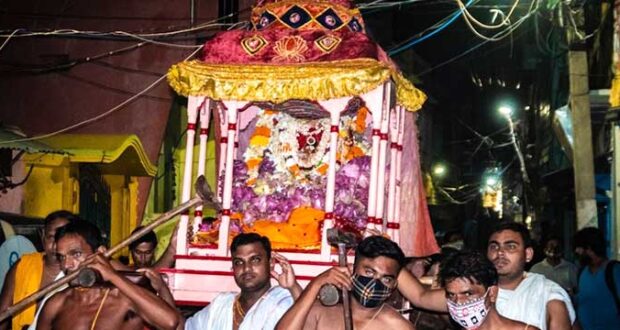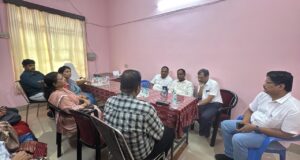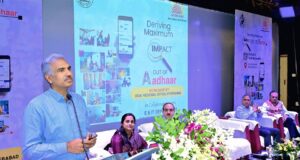Bhubaneswar:1/7/25: In every household, disagreements between couples are common, and it’s natural for a wife to feel upset when her husband comes home late. This dynamic is beautifully depicted in the mythological relationship between Goddess Lakshmi and Lord Jagannath. When Lord Jagannath delays His return to the sacred Srimandir, Goddess Lakshmi displays Her displeasure, showcasing the loving yet assertive side of their divine relationship.
Hera Panchami is a captivating tradition in which Goddess Lakshmi expresses her anger towards her husband, Lord Jagannath, as he embarks on a nine-day journey to Gundicha temple along with his siblings. Lord Jagannath remains so busy meeting His devotees and spending time with siblings at His aunt’s house that He forgets about Goodness and gets late coming back to Srimandir.
The Hera Panchami ritual brings to life the divine drama of celestial deities. Goddess Lakshmi’s wrath is unleashed upon Lord Jagannath as she unleashes her fury, her anger blazing like a thousand suns.
Going by the ritual, Lord Jagannath’s divine outing with his siblings, Balabhadra and Subhadra, leaves his consort, Goddess Lakshmi, waiting anxiously at the Srimandir. Her patience wears thin as the days pass, and Lord Jagannath fails to return, engrossed in his divine revelry with devotees. The goddess’s longing turns to anger, and she decides to take matters into her own hands.
Goddess Lakshmi sets out in a grand procession to the Gundicha Temple, her palanquin borne by temple servitors, to confront her beloved husband. Upon arrival, she unleashes her wrath upon Lord Jagannath’s chariot, Nandighosha, ordering her servitors to damage a part of it as a symbol of her displeasure. This dramatic display of divine emotions showcases the complex dynamics of their celestial relationship.
“Goddess Lakhmi comes out of the Srimandir in a palanquin amid a grand procession on Bada Danda and reaches the Nandighosh chariot in front of the Gundicha temple. But unable to meet her husband, she damages the Nandighosh rath out of anger,” said a servitor, Kumar Bhimsen.
The Evolution of Hera Panchami
According to the ancient texts of ‘Ratha Chakada’, King Kapilendra Deb revolutionised the Hera Panchami ritual, transforming it from a simple chanting ceremony to a grand and majestic celebration. Since his reign, this ritual has become an integral part of the Rath Yatra festivities. Significantly, Hera Panchami marks the beginning of the Bahuda Jatra, where the three chariots are ceremoniously turned southward, known as Dakhina Moda, signalling the return journey of the deities.
Around 129 years ago, Odisha’s pioneering vernacular daily, Utkal Deepika, published the first-ever article on Hera Panchami, shedding light on this significant aspect of Odia culture. This milestone marked the beginning of a new era in the coverage of Odisha’s rich heritage, exactly on July 28, 1888.
 Odisha news today, Latest Oriya News Bhubaneswar Online Odia news Portal
Odisha news today, Latest Oriya News Bhubaneswar Online Odia news Portal




